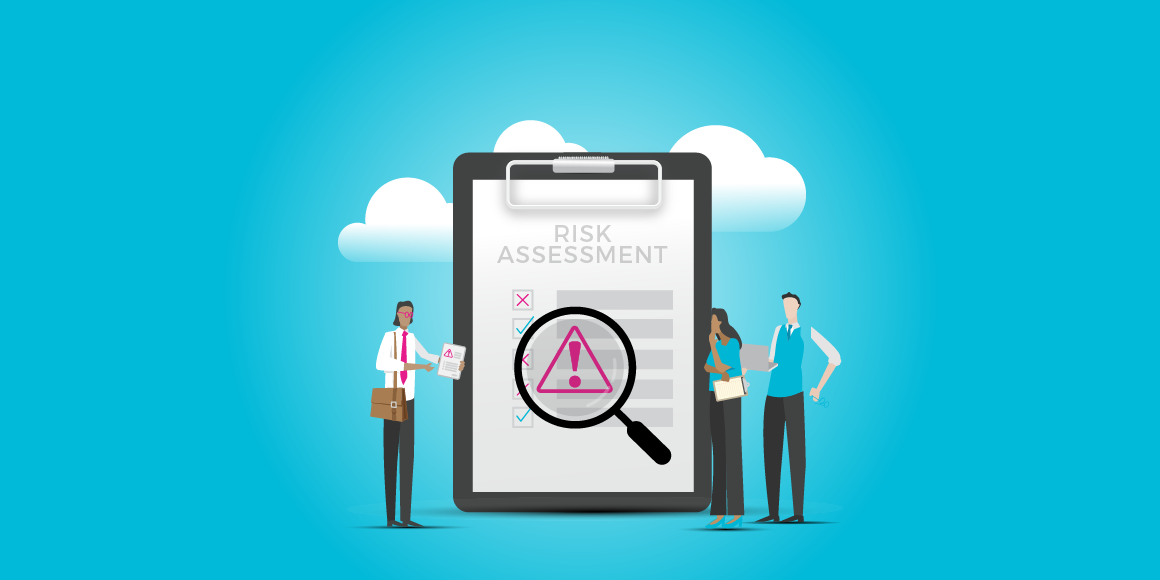Developing a rebate platform in-house sounds appealing. You already have an IT team, you understand your internal systems, and a custom solution feels like it would give you more control. In practice, though, that sense of control often comes at a high cost—both financially and operationally.
Software development projects are notorious for missed deadlines, ballooning budgets, and disappointing results. More than half of internal builds never meet expectations, and nearly one in five fail entirely. Before you know it, your “custom system” becomes a full-time job. The stakes are even higher for rebate management, where accuracy, compliance, and scalability are non-negotiable.
Along the way, we’ll explore the hidden costs, risks, and trade-offs that often get overlooked, and provide you with the insights you need to make an informed decision. Whether you’re weighing the pros and cons or preparing to make the case to leadership, this guide has you covered.
Building vs buying a Rebate Management Platform at a glance
|
Belief |
Reality |
Key Data Points |
|
“Building in-house will save us money.” |
Building is a budget black hole. |
- Development costs: $100,000–$400,000 annually - Maintenance: 15–25% of build cost annually ($15K/month for $100K build) |
|
“We can launch faster if we build it ourselves.” |
Building takes forever. |
- In-house timeline: 6–12 months - Vendor timeline: 4–8 weeks |
|
“Our IT team can handle it.” |
Rebate management is a full-time job and messing it up is costly. |
- Average data breach cost: $4.4M - 60% of breaches caused by human error - Compliance violations: Up to $20M (GDPR) |
|
“We’ll have more control if we build it ourselves.” |
Control doesn’t mean better outcomes. |
- 66% of software projects face cost overruns or delays - 50% are considered failures - 19% fail catastrophically - “Customization” results in fragmented processes, manual work, and inconsistent brand experiences across markets. |
Belief #1: “Building in-house will save us money.”
Debunked: Building is a budget black hole.
Building your own rebate platform seems like a cost-saving move. No subscription fees, no vendor contracts, just your internal team and their expertise. But here’s the reality:
Development costs
Building a secure, scalable platform requires significant upfront investment. On average, custom software development costs between $100,000 to $400,000 annually depending on complexity.
Hidden maintenance costs
Once the platform is live, your team will need to handle ongoing updates, compliance, and troubleshooting. Expect to budget 15% to 25% of your original development cost for maintenance. Let’s consider the lowball averages: $100,000 original costs at 15% maintenance is an extra $15K per month.
Opportunity costs
Every hour your IT team spends on rebate management is an hour they’re not spending on core business priorities. And that adds up! Like monetary maintenance costs, teams typically spend 15% to 20% of their original dev time (more on this shortly) annually, making sure that everything is running smoothly and fixing issues as they arise.
Conversely, buying a specialized solution like 360insights means predictable costs and built-in updates, eliminating maintenance spend and freeing IT to focus on innovation (more on this shortly).
Belief #2: “We can launch faster if we build it ourselves.”
Debunked: Building takes forever.
So, how long are we actually talking when it comes to software development timelines Typically, anywhere from 4 months to an entire year? Compare this to a 4 to 8 week launch period when you’re buying a platform. Let’s break it down a bit further.
Building in-house:
Planning & design (2–4 months):
Includes: gathering requirements, creating wireframes, and finalizing the architecture. Don’t mess this part up, as mistakes here can lead to costly rework later! And remember, aligning stakeholders and finalizing requirements often takes longer than anticipated.
Development (4–9 months):
Writing the code, integrating systems, and building out features is the most time-intensive phase. Time spent depends on the complexity of your rebate program and the size of your development team. Remember to factor in unexpected delays due to bugs, shifting priorities, or resource constraints.
Testing & QA (1–3 months):
Before launch, you’re going to want to test your platform. This includes user acceptance testing (UAT) and stress testing for scalability, security, compliance, and pesky little bugs. Fixing issues uncovered during testing can push timelines further.
Deployment (1–2 months):
Once the platform is ready, your team will need to deploy it, integrate it with existing systems, and train end-users.
Compare this to...
Buying a platform:
4-8 weeks total
Vendor Selection (1–2 weeks):
It’s shopping time. Research and choose a platform that meets your needs.
Onboarding & Configuration (2–4 weeks):
The vendor handles setup, configuration, and integration with your existing systems. Pre-built templates can help speed up the process.
Training & Launch (1–2 weeks):
Vendors provide training resources and support to ensure your team is ready to hit the ground running.
Belief #3: “Our IT team can handle it.”
It’s easy to assume your IT team can take on the challenge of building and maintaining a rebate platform. They’re skilled, resourceful, and already familiar with your systems. But your IT team drives transformation and is not set up to run a mini fintech operation. Even the most experienced IT teams often underestimate the ongoing effort required to manage a rebate platform effectively. Here’s why that’s a chance you just can’t afford to take:
Security
Average data breach cost: $4.4 million
Handling sensitive data like consumer payment information and tax records requires airtight security and compliance measures. Oh, and did we mention that the average data breach in 2025 was a whopping $4.4 million? 60% of the time, that error would be a totally human one. This begs the question: Would you bet $4.4 million on your IT team’s expertise when it comes to managing the security of your consumer rebates program?
Compliance
Regulations like GDPR, SOC 2, and CCPA evolve constantly, and staying compliant means dedicating significant time and resources to updates, audits, and monitoring. In the planning stages alone, legal and compliance reviews can take 6-8 weeks. Do you really want to throw those time lags into your IT team's packed schedules? Violations also have massive financial and reputational implications:
- GDPR: Up to $20 million (or 4% of a company's global annual turnover)
- California Consumer Privacy Act (CCPA): Up to $2,500 per unintentional violation and up to $7,500 per intentional violation
- SOC 2: Significant damage to your reputation, undermining any efforts to position yourself as compliant and secure
Addressing the emotional resistance elephant: “But we’re proud of our internal capabilities!”
Even the best IT teams can’t match the speed, specialization, and scalability of a dedicated rebate platform. Here’s how to reframe the conversation:
- Focus on strategy: Your IT team’s time is better spent on projects that drive innovation and growth! They shouldn’t be babysitting a rebate platform.
- Avoid burnout: Building and maintaining a platform in-house can stretch your team thin, leading to delays and frustration.
- Leverage external expertise: Partnering with a vendor enhances your team’s value by giving them the tools they need to succeed.
Belief #4: “We’ll have more control if we build it ourselves.”
Debunked: Control doesn’t mean better outcomes.
Many teams assume that building a rebate platform in-house gives them more control. If your team builds it, you decide what gets added, changed, or removed. But consider practicality. As we've covered, building your own solutions is costly, laborious, and a straight up time suck. Customization adds to this risk, and chances are you will end up with a product that is lackluster at best. The data tells the story:
- 66% of software projects face cost overruns or delays
- 50%-70% fail to meet expectations
- 19% fail catastrophically
“Full control” often leads to full-time firefighting.
A scalability nightmare
Custom builds can’t easily adapt to change. Adding features, scaling to new regions, or updating compliance requirements all take time, testing, and technical resources. Every new market, product line, and pricing model demands another layer of development. Before long, your team is managing a tangle of specialized code and manual steps that only a few people understand.
The result is a patchwork of inconsistent processes that slow down operations and make reporting a nightmare. When the people who built the system move on, that “control” walks out the door with them, leaving behind knowledge gaps and mounting technical debt.
A legal headache
And if you think building gives you more control legally, think again. Contracting for an in-house build often involves complex IP ownership, maintenance, and contractor agreements that can expose your business to risk if not handled perfectly. A SaaS platform, on the other hand, clearly defines service levels, data ownership, and compliance responsibilities upfront, transferring much of that legal risk to your vendor instead of your internal team.
Configuration over customization
A vendor platform gives you flexibility without chaos. Instead of recoding each time your program evolves, you can configure workflows and rules in minutes. Built-in compliance, automation, and security updates keep everything consistent across brands and regions.
Belief #5: “Leadership will never approve the budget for a platform.”
Debunked: It’s all about how you frame the conversation.
Most of the time, the resistance to approving the budget needed to buy a consumer rebates platform comes from debunked beliefs #1 to #4. Your job? Connect the dots between what we’ve covered and the outcomes leadership cares about most. Here’s how:
Building in-house is a budget black hole.
What to say to leadership:
- “Building a rebate platform in-house might seem cheaper upfront, but the numbers tell a different story. Development alone costs between $100,000 and $400,000 annually, and that’s before we factor in maintenance, which adds another 15–25% of the original cost every year. A vendor platform, on the other hand, offers predictable subscription fees and eliminates the risk of budget overruns.”
- “By choosing a vendor platform, we can avoid the hidden costs of building in-house and free up our IT team to focus on strategic priorities instead of ongoing maintenance.”
Building takes forever.
What to say to leadership:
- “Time is money, and building in-house takes a lot of both. Between planning, development, testing, and deployment, we’re looking at a 6–12 month timeline assuming everything goes smoothly. A vendor platform can be up and running in just 4–8 weeks, allowing us to start generating revenue and optimizing our rebate program much sooner.”
- “The faster we launch, the faster we can start gathering data, improving offers, and proving ROI. A vendor platform aligns with our need for speed and agility.”
Our IT team can handle it.
What to say to leadership:
- “This is actually a massive undertaking for any IT team, no matter how competent. From security to compliance to scalability, the demands on our IT team will only grow over time. For example, the average cost of a data breach is $4.4 million, and 60% of breaches are caused by human error. Do we really want to take that risk?”
- “Regulations like GDPR and CCPA are constantly evolving, and staying compliant requires significant time and resources. A vendor platform comes with built-in compliance features, reducing our risk and saving our team countless hours.”
- “By outsourcing rebate management to a vendor, we can protect our IT team from burnout and ensure they’re focused on projects that drive innovation and growth.”
Bonus Myth: “Our local agencies have it handled.”
Reality: Agencies deliver great creative, not scalable execution. Each one runs its own playbook, its own data structure, and its own workflows, meaning you get six versions of “success” and zero unified insight.
360insights actually powers your agencies with automation, compliance, and data. They stay creative; you stay in control: A global CPG consolidated six local agencies, achieving 40% faster claims and 99% audit compliance with 360insights.
Is It Time for a New Rebate Platform?
Building your rebate platform in-house may look like control, but it comes at a high cost: scalability, efficiency, and (yes) actual financial cost. 360insights gives you both. Faster launches. Lower risk. Global reach.
Let’s build something that scales.
Talk to our team to benchmark your current cost of execution vs. an automated model.






